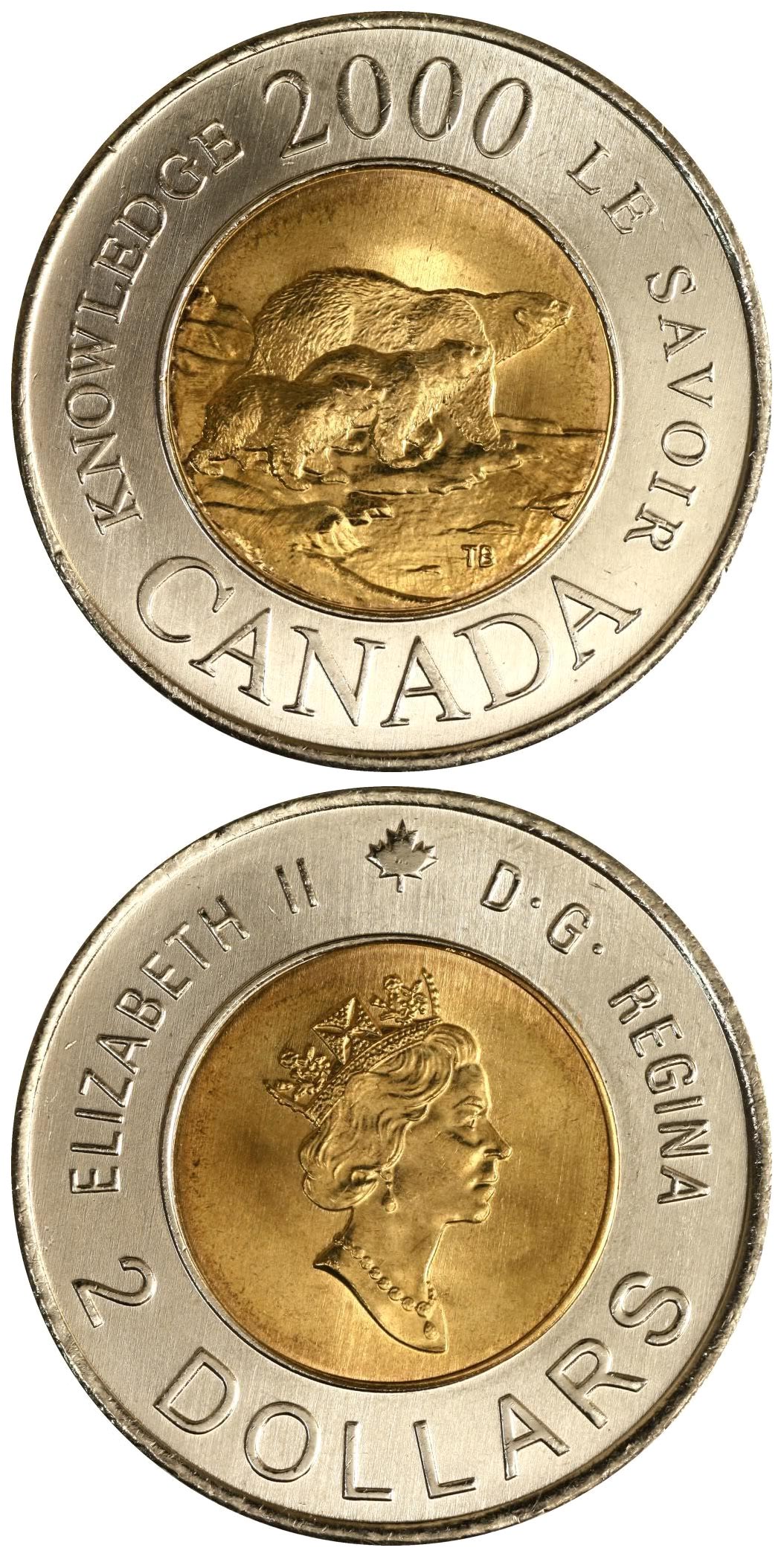Canadian Toonie
The 2-dollar coin, or 'Toonie', as Canadians have named it, features the image of an adult polar bear in early summer on an ice floe. It was designed by wildlife and landscape artist Brent Townsend. The 2-dollar coin was first introduced on February 19, 1996, to replace the 2-dollar bill.
Errors and varieties of canadian coins
2010 Canadian Two Dollar Toonie In Sp - 68 2 photo. 2005 $2 First Day Strike In Ms 65 2 photo. 1996 Uncirculated Toonie Two Dollars 2 photo. Rare 1996 Canadian 2 Dollar Coin - Center Off Strike 4 photo. 2004 Canadian Silver Proof Toonie ($2. 00) - Toned Spots 2 photo. Find many great new & used options and get the best deals for 1867-2017 Canada 2 Dollar (Toonie) Coin at the best online prices at eBay! Free shipping for many products! Did you scroll all this way to get facts about canadian toonie? Well you're in luck, because here they come. There are 91 canadian toonie for sale on Etsy, and they cost $14.61 on average. The most common canadian toonie material is metal. The most popular color? You guessed it: silver. The Canadian penny has been made from copper-plated steel since 2000. The circulating Canadian nickel, dime, and quarter are all currently made from nickel-plated steel, although the dime was made of pure nickel from 1968 to 2000.
Throughout the production process to create a coin, several issues can arise. When a coin shows an anomaly, it's either an error or a variety. Generally speaking, a variety, created intentionally or not, affects the design only and is generated even before the coin is produced, while an error is the result of an unintentional irregularity that happened during the production process.
The errors and varieties of Canadian coins can be divided into three categories:

The list of errors and varieties below is divided by category and ordered alphabetically.
Die errors
Cuds
Die Chip
Die Crack
Die Damage by Hub
Dots
Filled Die
Value Of Canadian Loonie
Misaligned Die

Mule
Retained Broken Die
Rotated Die
Planchet errors
Clipped Planchet

Flaw Planchet
Wrong planchet
Striking errors
Die shift
Double struck reverse
Full Brockage
Partial Brockage
Retarded Coin
Uncentered broadstrike
Errors and varieties listed by Hans Zoell
Here are pictures from Coinsandcanada listed by Hans Zoell in his various publications.

Canadian coins price guide and values
The British colonies, led by the Province of Canada, needed to replace the sterling system with the decimal system used in the United States. In 1858, With London's approval, Province of Canada issued coins minted in England in denominations of 1, 5, 20 and 50 cents. With the creation of the Dominion of Canada in 1867, Ottawa issued a new series of coins that were legal tender in the four provinces that signed the 1867 Confederation pact.
The value of a canadian coin depends on several factors such as quality and wear, supply and demand, rarity, finish and more. Values in the section are based on the market, trends, auctions and recognized books, publications and catalogs. This section also includes information on history, errors, varieties, characteristics and more.
1-cent coins
5-cents coins
10-cents coins
20-cents coins
25-cents coins
50-cents coins
1-dollar coins
2-dollars coins
View the 250 last updates of canadian coins values or the Canadian coins melt values calculator.